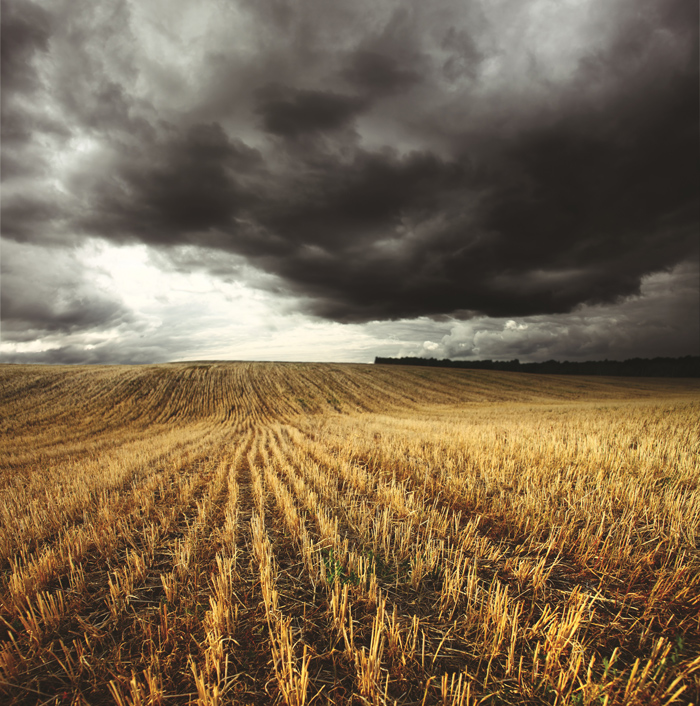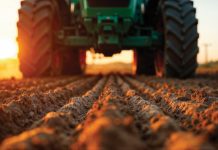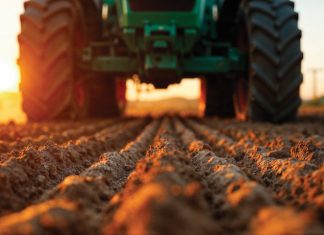Food insecurity is on the rise. Price hikes over the past year – especially that of fuel and consequently food – have had a major impact on households and even more so on the lower income group. Middle-class households are also feeling the brunt of recent fuel and food price increases. Apart from the considerable increase in fuel and transport prices, the average food basket also shows monthly increases.
The North-West University (NWU) hosted an online media event – ‘Are there rainy days ahead?’ – on 28 July, where experts in their fields shared topical information.
Market trends
Dr Johnny van der Merwe, former lecturer at the NWU Potchefstroom campus and managing director of the agricultural information group, Agrimark Trends (AMT), who is an expert in the field of agricultural economics, gave a bird’s eye view on the latest trends in livestock and grain markets and on what awaits the agricultural sector for the rest of 2022.
‘We must start off by asking why we find ourselves in the current situation where agricultural producers and consumers are faced with a steady increase in input and food prices. The COVID-19 pandemic had a major influence on global markets and food prices over the past two to three years. Other factors also form part of the equation, but COVID had the biggest influence,’ Dr Van der Merwe said.
He pointed out that a combination of different factors across sectors and markets over the past two years influenced the global and local markets.
Grain industry
The grain industry, which forms the base for South Africa’s staple food, saw the most severe price increases over the past year. ‘With the pandemic there was a shift in demand towards more basic food products, not only locally but also internationally, and this created a spike in food prices due to the supply and demand market forces that came into play,’ he explained.
Dryer weather in the Northern Hemisphere production areas severely compromised the expected spring wheat harvest in the United States (US) and Canada and resulted in lower yields and higher prices. Production issues in South America also drove prices to a higher level.
He also said that the Russia-Ukraine war had a major impact on world grain prices as it significantly increased the medium-term uncertainty in the global grain trade. The conflict is not only affecting production, but is also disrupting logistical aspects in the Black Sea region. ‘Commodity markets have reacted strongly to this uncertainty, sending agriculture futures through the roof. The grain supply disruptions due to the current war in the area are affecting the global market,’ he continued.
Russia and Ukraine are major producers of agricultural commodities. Wheat and maize together account for 65% of Ukraine’s grain production. The country has the reputation of being Europe’s ‘breadbasket’ and normally exports 10% of the world’s wheat, 14% of maize, 17% of barley and 51% of the world’s sunflower seed oil. In the past, about 40% of Ukraine’s wheat and maize exports went to the Middle East and Africa.
Ukraine’s wheat production mostly takes place in the eastern and southern parts of the country in the Kharkiv, Dnipro, Zaporizhia and Odessa regions, while the maize is produced more to the north-east in the Poltava, Sumy and Chernihiv regions. All these regions are currently suffering from attacks from Russia and this raises concerns about the outlook for Ukraine’s grain production and export for the next couple of seasons. ‘The war has had a huge effect on expected food supplies and that resulted in higher prices. The last two to three weeks, we did, however, see that the prices went down a bit due to the promise of more grain coming out of Ukraine.’
On a global scale, the world is experiencing an economic growth decrease with lower trading levels and higher interest rates to counteract inflation rates with a significant impact on consumer prices.
With regard to local production cost, Dr Van der Merwe said that he did not expect input prices to come down significantly. ‘Although fertiliser prices are coming down, I do not expect the prices to come down to where they were before COVID or even before the Russia-Ukraine war. The cost of exports, transport and logistics will continue to have an impact. Containers are extremely expensive. Where they were available at $1 500 per container before COVID, we now see prices of $15 000 per container. This has an effect on transport costs.’
He said that the input costs will put producers under pressure for the coming planting season and that planning will be very important.
Livestock
In the case of livestock, mostly local factors are driving the market at present. ‘I am expecting that the foot-and-mouth disease outbreaks will continue to influence the livestock industry. We also saw weaner prices coming down. More animals were delivered into the market and that drove the price down.’
Dr Van der Merwe said that the higher interest rates will place consumers under pressure and that he expected a shift in demand. ‘I do not expect a lower demand for food, but definitely a shift towards cheaper foods or staple food, consumers moving towards bulk buying, and a shift from mutton and beef to poultry and pork.’
Broader economic picture
During the sessions professor of economics at the NWU Potchefstroom campus, Waldo Krugell, discussed the broader economic picture currently seen in South Africa. It seems as if consumers’ wallets will be stretched further as external factors continue to mount.
‘There is nothing that focus the consumer’s attention on the economy as the inflation levels and the impact it will have on their pockets,’ he said.
He pointed out that the current situation of higher repo rates, and a weaker rand coupled with low productivity, may lead to social unrest. ‘Stormy clouds are facing the South African economy.’
Social unrest due to the lack of service delivery has already flared up in Tembisa and other areas recently and industry action focussed on salary increase demands are not uncommon. According to Prof Krugell, these factors are compounded by load shedding. ‘Unfortunately, it seems that although the bad news might be easing with the lower fuel prices this week, the storms will not be ending. Markets will remain volatile and we expect that inflation will still increase during the remainder of the year. Most likely the South African Reserve Bank (SARB) will react by further increasing the repo rate with commercial banks following. It is predicted that we will move towards a 7% rate towards the end of the year.’
Prof Krugell also pointed out that South Africa’s economic growth rate is too slow and with the high unemployment rate, the gap between rich and poor will continue to widen. ‘A lost decade of institutional decay and very low levels of investment have the country struggling to deliver social services and to keep the lights on.’
International influences
He explained that international forces are also influencing the country’s economy, creating a great deal of uncertainty. One of the world events that is heavily impacting not only on the global economy, but on South Africa as well, is the war in Ukraine. ‘PwC did a scenario analysis and predicted that there is a 50% chance of a baseline situation where things will remain the same with a stalemate situation in Ukraine. They gave a 30% chance of the war escalating and a 20% chance of a diplomatic solution. Resolving the conflict in the area will be the best way to reduce the pressure on commodity prices, inflation and the interest rate in South Africa,’ he said.
He added that if one could have a better grip on how things will play out in Ukraine, it will be possible to better predict how the rand and inflation will react.
Prof Krugell pointed out that the US economy has a huge influence on what happens locally. ‘Increased interest rates in the US strengthen the dollar and weaken the rand. This means that everything we import will be more expensive. Higher interest rates in the US also make it a more lucrative market for investors in comparison to South Africa. SARB has no option but to follow suit to keep our bond markets lucrative. We may, however, expect that the US economy will be slowing down toward the end of the year without going into a recession. That will mean that the US will not necessarily increase interest rates and at least will keep it on the current level. If the increments in rate increases in the US get smaller, the pressure on South Africa to increase rates will also decrease.’
Another market that has a huge influence on the world economy is China. ‘The Chinese economy only grew with 0,4% in the second quarter and this was not good news for South Africa. China’s zero-COVID lockdowns are affecting their production and consumption and the consumer confidence in China is very low.’ He added that this indicated that the entire world economy was in a low growth phase. ‘The US economy is slow, the European Union is experiencing an energy crisis, and China has growth problems. This does not present a rosy picture for South Africa.’
Possible influence of global events on South Africa:
- Russia-Ukraine war
If there is a resolution to the current conflict, it may result in lower oil prices and lower grain commodity prices that will put less pressure on inflation and interest rates. The lower grain commodity prices will, however, mean lower prices for producers as our grain price is related to global commodity prices. Lower fertiliser prices will help to curb input prices. The mining sector in South Africa has benefitted from the war situation, so if the conflict is resolved, it might have an influence on this sector. - Soft landing of US economy
If the US markets recover, the need to increase interest rates to protect bond markets will be lessened and the rand may be less volatile. Slower growth in the US, however, also means lower prices for exported goods from South Africa. He pointed out that the US still comprises about 10% of South Africa’s export market. - China’s economy keeps growing
If China’s economy grows, it will be good for our export market and exchange rates, but he warned that China might leave South Africa behind. One of the areas to watch out for is the change in policy regarding biotechnology. If China fully adopts the technology, as all indications are at present, their grain production will increase over the next couple of years and this may affect South African grain exports to that area of the world.
‘South Africa’s economy is growing too slow. We have never experienced a growth miracle and the country’s economy never grew fast enough to solve the problems of high inequality, high unemployment, and high levels of poverty. Economists say that we are back in the 80s with a high debt burden, high inflation, a weak state, high interest rates, and political violence. We are living on the edge of fiscal austerity,’ he warned.
He explained that the current situation presented major challenges to the economy. ‘The tug of war between the state and the market continues. There are many policy uncertainties and presented plans and policies are not explained properly. This causes uncertainty in the market.’
Prof Krugell cautioned that South Africa did not need another plan to solve its problems. ‘We need execution and implementation of the latest plans and strategies on the table.’
Weather
Changing weather patterns have a major impact on the agricultural sector and – as seen over the past couple of seasons – can result in warmer temperatures, later rains and later planting times. During the information session renowned climatologist, Dr Sheldon Strydom, shed some light on what the weather holds for the coming summer rainfall season.
Looking at the current situation, he said that since 2020 parts of the summer rainfall area experienced normal to above average rainfall, whereas some areas in the winter rainfall area experienced below average rainfall for the season. The above average rainfall experienced in parts of South Africa during the summer rainfall seasons could be attributed to the La Niña phase of the ENSO, he said.
El Niño and the Southern Oscillation (ENSO) is a series of linked atmospheric and ocean-related phenomena affecting the climate that occur every two to seven years. El Niño refers to the warm phase of ENSO and is typically associated with drier conditions during the summer rainfall season, while La Niña refers to the cold phase and is typically associated with wetter summers in South Africa. These events trigger predictable disruptions of temperature, precipitation and large-scale air movements in the tropics, resulting in a cascade of global side effects. ENSO conditions are continuously monitored to predict the phase of seasons in advance.
Dr Strydom said that there is an above 50% probability that La Niña conditions will continue through August to January and that it will be associated with normal to above rainfall for the summer rainfall area in South Africa (based on the Columbia University IRI ENSO Probabilistic ENSO forecast, and the Australian Bureau of Meteorology ACCESS S2 model).
Forecasts for the future
Looking ahead for the 2022/2023 season, it was necessary to take into account the current position of the Intertropical Convergence Zone (ITCZ). The ITCZ is a visible band of clouds encircling earth near the equator and is the area where the northeast and the southeast trade winds converge. ITCZ lies in the equatorial trough, a permanent low-pressure feature where surface trade winds, laden with heat and moisture, converge to form a zone of increased convection, cloudiness and precipitation. The ITCZ’s position, structure and migration influence the earth’s climate on a global scale. It moves north of the equator in our winter and south of the equator during our summer and is one of the main mechanisms responsible for transporting heat and moisture south towards South Africa.
‘If we look at the current data, it seems as if the ITCZ is behaving normally. The current position of the ITCZ is where we would expect it to be at this time of the year, with the eastern region slightly more south than normal. The more south it moves, the better it will be for summer rainfall,’ Dr Strydom said.
He cautioned, however, that it was important to continue monitoring the situation as it can change over time. He pointed out that it must be remembered that there are other factors also impacting on the weather, but said that producers could at least expect a fairly normal spring and early summer.
He added that the South African Weather Service (SAWS) predicted a below average rainfall for July, August and September, but followed with an above average rainfall for the summer rainfall area in parts of the Eastern Cape, Mpumalanga, KwaZulu-Natal, Gauteng and the North West from October to January. Limpopo seems to be prone to lower rainfall than average. ‘Early spring rain may lag, based on the SAWS seasonal outlook, but will most likely return to normal in October.’
Dr Strydom cautioned producers to see these predictions as early forecasts. ‘A lot can change in a short time. These forecasts should only be used as a guide.’




















